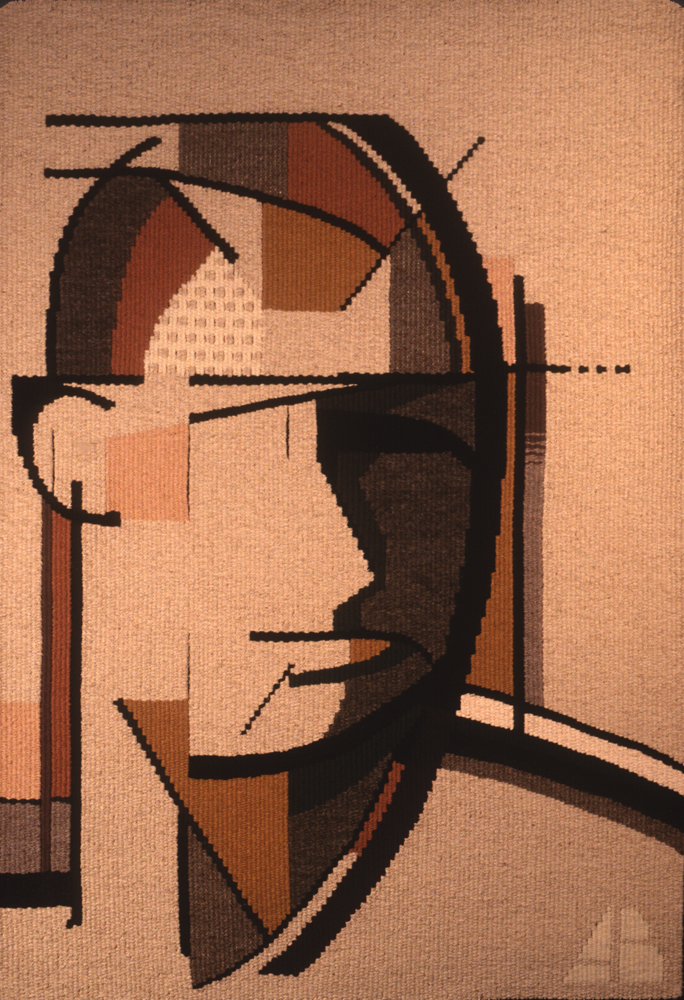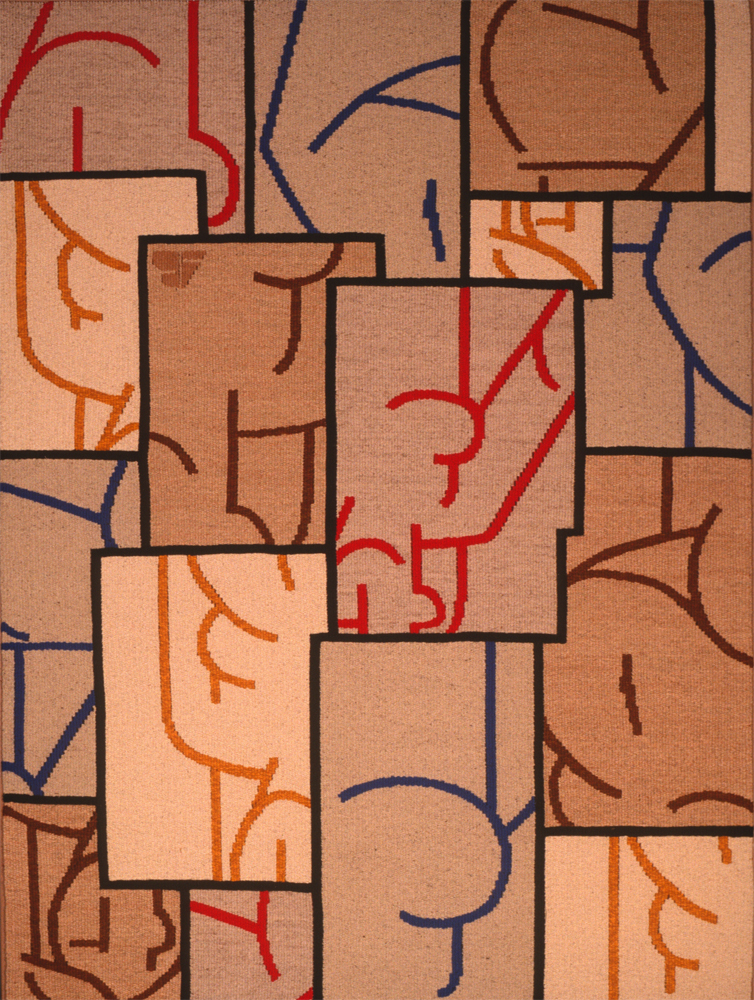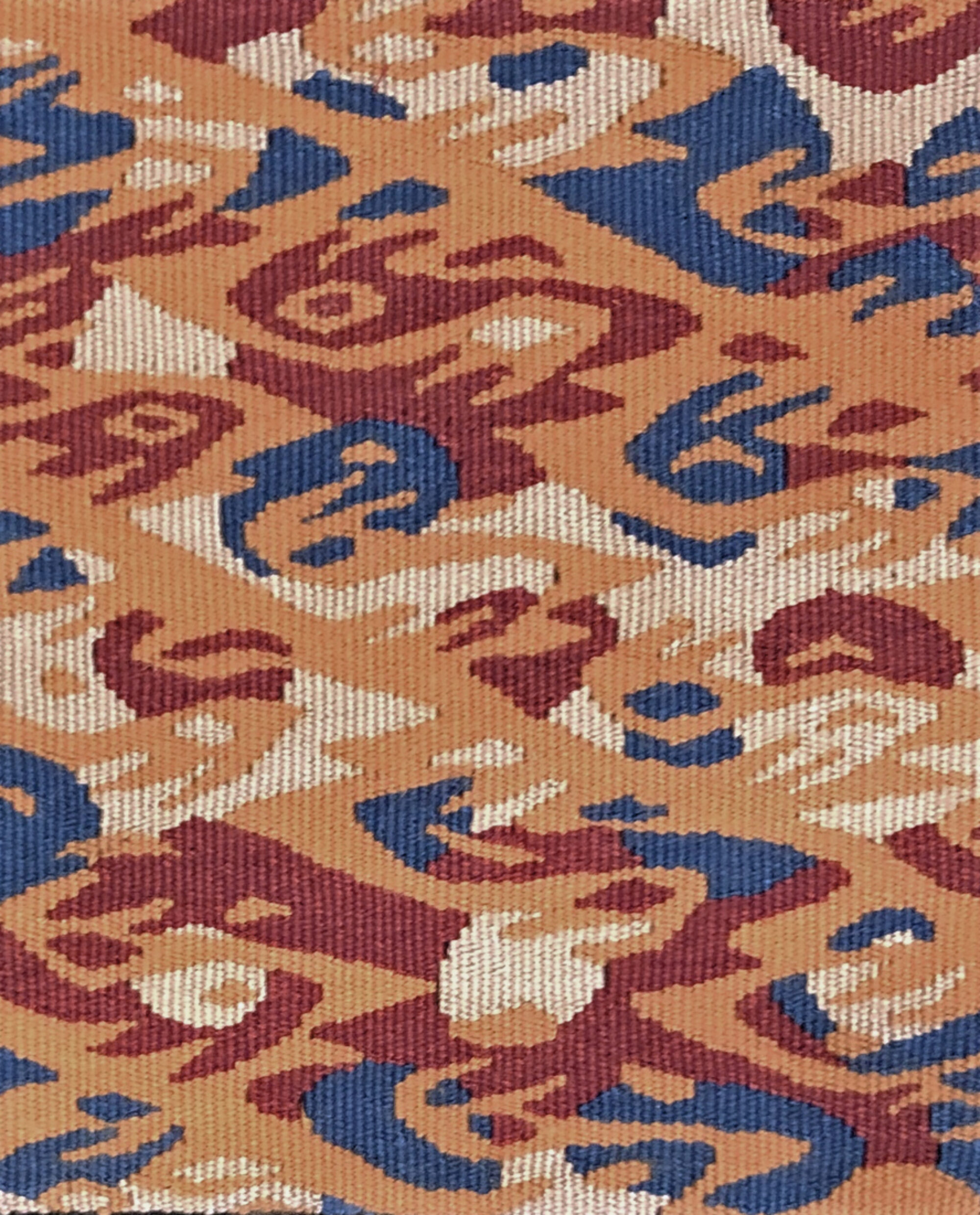This exhibition review was first published in Textile Forum 2/2002.
The Drawing Series
Gail Martin Gallery, New York, NY, 2002
In 1980 Archie Brennan posed the following question: “Will the ensuing tapestry be a proper extension of the work? Not just a variation of the original using some adopted system of techniques and colour transposition, but such that the tapestry will have an identity that is its own.” 1 Brennan’s solo show, The Drawing Series, at the Gail Martin Gallery 2 reveals that Brennan still ponders this question daily. Because tapestry is commonly woven from an image rendered initially in some other medium, tapestry artists must consider carefully the relationship between the maquette and the tapestry. The greater the technical finesse of the weaver, the greater the possibility for slavish imitation. Brennan is both a technical virtuoso and a reflective artist. The Drawing Series offers a glimpse of how he currently balances the power between drawing and tapestry.


In the Drawing Series Brennan worked directly from Conte sketches assembled through years of life drawing, sketches made without tapestry in mind. The earliest piece in this series is, in the artist’s words, “a deliberate imitation”.3 From this start, Brennan experimented with various interpretive modes, pursuing “ a vocabulary of mark making that is arguably inherent in the tapestry process.” 4 Comparing Female (Double) Head with Butch 4 illustrates the artist’s journey. Brennan calls both of these pieces studies. They are woven directly from drawings, without compositional embellishment. Female (Double) Head employs subtle blending techniques to suggest the nuances of the charcoal sketch. The width and value of the woven line changes to reflect the sketch. This tapestry bows to the authority of the drawing.
Seven years later Brennan experiments with a much bolder approach in Butch 4. Areas of the drawing are distinguished by discrete changes in material or color. Each woven line stands strong and firm, emphasizing both the warp’s structural nature and its role as a unit of measurement in the translation of the drawing. The vertical and horizontal axes of the warp and weft infiltrate the image, acting as a scaffolding upon which the figure is built. Brennan further emphasizes the grid of tapestry by weaving the figures from bottom to top, thereby producing a more stepped line. The composition of line and shape grows out of the intersection of the drawing and the weave of the cloth. In later pieces in this series, for instance Seated Nude Rear, the horizontals and verticals extend beyond the figure, developing compositional spaces not present in the drawings.
Incorporating a grid into the design references the warp and weft of the cloth. The grid’s non organic regularity rejects spatial illusionism as it maps the two dimensional surface. Brennan’s careful balancing of compositional space and his skillful use of the textural and reflective properties of different cottons, linens and wools reflects his interest in the two dimensional nature of his art. The completely artificial nature of the grid emphasizes the role of the artist’s hand. For art is not a transparent window onto reality; it is a filtered view through the lens of the artist. At the same time that the grid focuses our attention on the surface of the work, it also refers to space beyond the picture plane.5 Brennan plays with the tension between these tendencies, sometimes employing a border that contains the image, sometimes allowing the grid to run off the edge, thereby suggesting the image’s connection to the surrounding world.
Tapestry’s process influences all of Brennan’s work. In drawing, the paper becomes background simply by not drawing on it. In tapestry however, both positive and negative shapes are built row by row. Each have equal weight in the making. Brennan’s attention to foregrounding each area of the drawing through changes in the materials reflects his interest in this inherent quality of tapestry. Brennan’s pursuit of meeting tapestry in its own terms, his eschewal of descriptive color and his use of the grid allies him with artists who foreground the means of representation over the subject of representation. Looking at the Drawing Series as a whole, only one or two of the figures have a personality. In many cases, what defines them as individuals – their faces, or hands – are hidden from view. What interests Brennan is not the character of the sitter, but the rhythm and structure of the body and how it can be captured through weaving and the qualities of the materials. For Brennan the fascination lies with the tension that inevitably develops between drawing and tapestry.


In Dissembled Nude Brennan has manipulated the drawing to produce a multilayered composition, a cubist arrangement of overlapping planes which multiplies and fractures the figure. The manipulation evolves even further in Deconstruct/Reconstruct. The grid of primary colors has commandeered the figure, offering us an array of unidentifiable body parts which defies our attempts to reassemble a coherent figure. Shattered images evoke the dissolution and loss inherent in the passage of time. They are suggestive, leaving the viewer with questions to answer, voids to fill and the final impossibility of positing an unchanging reality.6 When the fractured image is that of a person, we are forced to question our own stability in a shifting world.
For Brennan the body parts become the fetishes of his artistic process. They fuel his search for “ outcomes that seek appropriate woven marks and characteristics that belong to my time, to my sensitivities.”7 For the viewer the tapestries offer insight into an active mind relentlessly pursuing an artistic vision that marries both process and product.
End Notes
1. Brennan apprenticed at the Dovecot, working at the venerable institution from 1947 through 1978 and directing it from 1973 through 1978. Archie Brennan “Transposition of a Painting into a Tapestry”. Master Weaver: Tapestry from the Dovecot Studios 1912-1980. Edinburgh: Canongate Publishing Ltd. 1980
2. The Drawing Series” was exhibited from March 9 through March 23, 2002 at the Gail Martin Gallery, 310 Riverside Drive New York, New York, 10025. (212) 864-3550 [email protected]
3. Archie Brennan. Gallery notes for the exhibition “The Drawing Series”. New York City: Gail Martin Gallery 2002.
4. Letter from the artist. February 2002
5. For a discussion of the grid in twentieth century art see Rosalind Krauss. “Grids” in The Originality of the Avant Garde and other Modernist Myths. Cambridge: The MIT Press, 1993
6. For a discussion of the fragmented body in art see, Linda Nochlin. The Body in Pieces: The Fragment as a Metaphor for Modernity. New York: Thames and Hudson, 1994
7. Archie Brennan. Gallery notes for the exhibition “The Drawing Series”. New York City: Gail Martin Gallery 2002.
